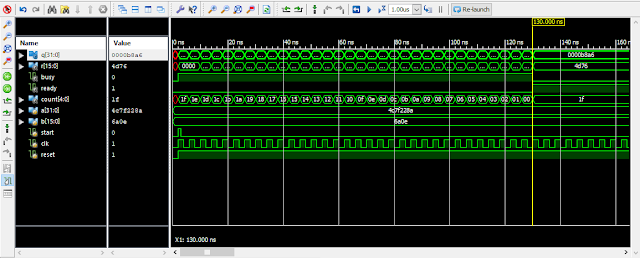Hello Dear Readers, At Applied Materials Bangalore, there is a vacancy for a Physical Design/PDK methodology Engineer role. Applied Materials is a global leader in materials engineering solutions used to produce virtually every new chip and advanced display in the world. We design, build and service cutting-edge equipment that helps our customers manufacture display and semiconductor chips – the brains of devices we use every day. As the foundation of the global electronics industry, Applied enables the exciting technologies that literally connect our world – like AI and IoT. If you want to push the boundaries of materials science and engineering to create next generation technology, join us to deliver material innovation that changes the world. Key Responsibility: Expertise in PDK enablement and library validation/automation. Hands-on experience with LVS/Parasitic extraction/standard cell characterization flows and methodologies Design/System level experience with DTCO and ...
Hello Dear Readers,
Today In this post I have implemented Restoring Division Algorithm Using Verilog HDL. So I have followed this One video from Tutorial Point Youtube Channel So go through it before Verilog code.
start means the start of the division; busy indicates that the divider is busy (cannot start a new division); ready indicates that the quotient and remainder are available, and the count is the output of a counter that is used to control the iterations of the division.
Verilog Code(Restoring):
module divider_32(a,b,start,clk,reset,q,r,busy,ready,count);
input [31:0] a; // dividend
input [15:0] b; // divisor
input start; // start
input clk,reset; // clk,reset
output [31:0] q; // quotient
output [15:0] r; // remainder
output reg busy; // busy
output reg ready; // ready
output [4:0] count; // counter
reg [31:0] reg_q;
reg [15:0] reg_r;
reg [15:0] reg_b;
reg [4:0] count;
wire [16:0] sub_out = {reg_r,reg_q[31]} - {1'b0,reg_b}; // sub
wire [15:0] mux_out = sub_out[16]? // restoring logic
{reg_r[14:0],reg_q[31]} : sub_out[15:0]; // or not
assign q = reg_q;
assign r = reg_r;
always @ (posedge clk or negedge reset) begin
if (!reset) begin
busy <= 0;
ready <= 0;
end else begin
if (start) begin
reg_q <= a; // load a
reg_b <= b; // load b
reg_r <= 0;
busy <= 1;
ready <= 0;
count <= 31;
end else if (busy) begin
reg_q <= {reg_q[30:0],~sub_out[16]}; // << 1
reg_r <= mux_out;
count <= count - 5'b1; // counter++
if (count == 5'h0) begin // finished
busy <= 0;
ready <= 1; // q,r ready
end
end
end
end
endmodule
input [31:0] a; // dividend
input [15:0] b; // divisor
input start; // start
input clk,reset; // clk,reset
output [31:0] q; // quotient
output [15:0] r; // remainder
output reg busy; // busy
output reg ready; // ready
output [4:0] count; // counter
reg [31:0] reg_q;
reg [15:0] reg_r;
reg [15:0] reg_b;
reg [4:0] count;
wire [16:0] sub_out = {reg_r,reg_q[31]} - {1'b0,reg_b}; // sub
wire [15:0] mux_out = sub_out[16]? // restoring logic
{reg_r[14:0],reg_q[31]} : sub_out[15:0]; // or not
assign q = reg_q;
assign r = reg_r;
always @ (posedge clk or negedge reset) begin
if (!reset) begin
busy <= 0;
ready <= 0;
end else begin
if (start) begin
reg_q <= a; // load a
reg_b <= b; // load b
reg_r <= 0;
busy <= 1;
ready <= 0;
count <= 31;
end else if (busy) begin
reg_q <= {reg_q[30:0],~sub_out[16]}; // << 1
reg_r <= mux_out;
count <= count - 5'b1; // counter++
if (count == 5'h0) begin // finished
busy <= 0;
ready <= 1; // q,r ready
end
end
end
end
endmodule
Verilog Code(Non Restoring):
module nonrestore_32(a,b,start,clk,reset,q,r,busy,ready,count);
input [31:0] a; // dividend
input [15:0] b; // divisor
input start; // start
input clk,reset; // clk,reset
output [31:0] q; // quotient
output [15:0] r; // remainder
output reg busy; // busy
output reg ready; // ready
output [4:0] count; // count
reg [31:0] reg_q;
reg [15:0] reg_r;
reg [15:0] reg_b;
reg [4:0] count;
wire [16:0] sub_add = reg_r[15]?
{reg_r,reg_q[31]} + {1'b0,reg_b} : // + b
{reg_r,reg_q[31]} - {1'b0,reg_b}; // - b
assign q = reg_q;
assign r = reg_r[15]? reg_r + reg_b : reg_r; // adjust r
always @ (posedge clk or negedge reset) begin
if (!reset) begin
busy <= 0;
ready <= 0;
end
else begin
if (start) begin
reg_q <= a; // load a
reg_b <= b; // load b
reg_r <= 0;
busy <= 1;
ready <= 0;
count <= 0;
end else if (busy) begin
reg_q <= {reg_q[30:0],~sub_add[16]}; // << 1
reg_r <= sub_add[15:0];
count <= count + 5'b1; // count++
if (count == 5'h1f) begin // finish
busy <= 0;
ready <= 1; // q,r ready
end
end
end
end
endmodule
Testbench:
module tb();
reg [31:0] a; // dividend
reg [15:0] b; // divisor
reg start; // start
reg clk,reset; // clk,reset
wire [31:0] q; // quotient
wire [15:0] r; // remainder
wire busy; // busy
wire ready; // ready
wire [4:0] count; // counter
//Device Under Test(DUT)
divider_32 test(a,b,start,clk,reset,q,r,busy,ready,count);
always
#2 clk=~clk;
initial begin
reset=0;
clk=0;
start=0;
a=32'h4c7f228a;
b=32'h6a0e;
#2
reset=1;
start=1;
#1
start=0;
end
endmodule
Timing Parameters:
Minimum period: 5.325ns (Maximum Frequency: 187.786MHz)
Minimum input arrival time before clock: 4.389ns
Maximum output required time after clock: 4.252ns


Thanks for your effort for giving test bench also and you are only one who provide complete expected code.
ReplyDeleteThanks for appreciation
DeleteGreat post ☺️
ReplyDeleteWow Non restore also added
ReplyDelete